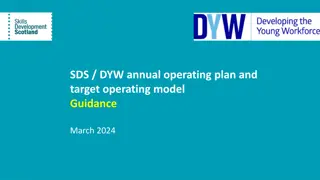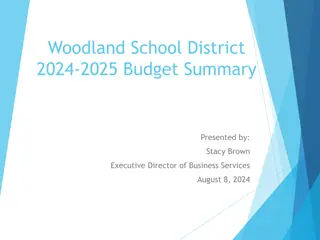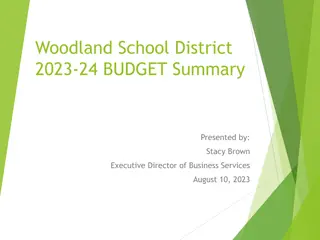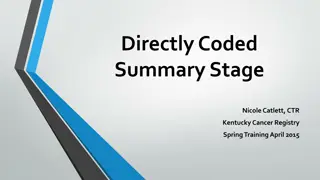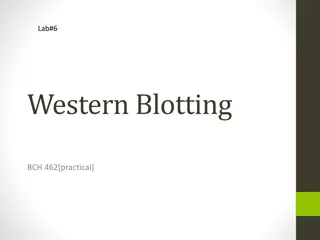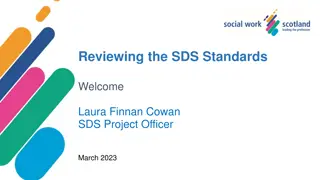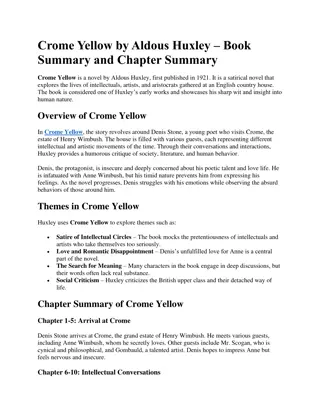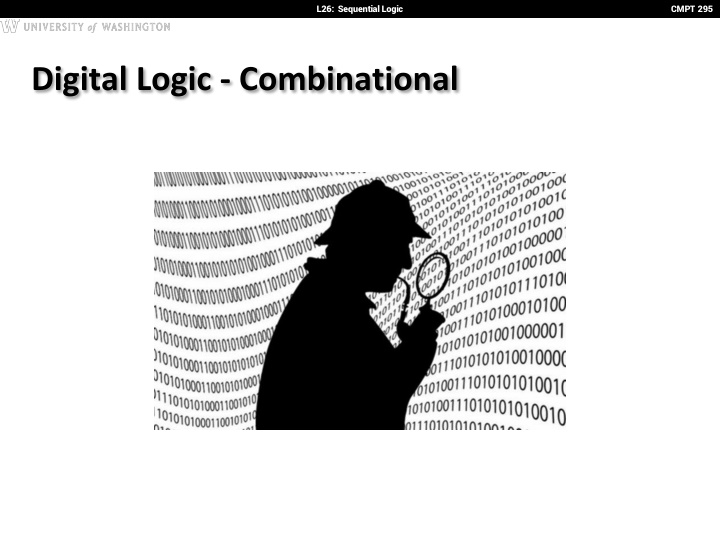
Understanding Sequential Logic in Digital Systems
"Explore the fundamentals of sequential logic in digital systems, including synchronous processing, types of circuits, logic gates, and combinational logic. Learn about truth tables, boolean algebra, circuit simplification, and the general form of functions. Discover the complexities and possibilities of digital logic design."
Download Presentation

Please find below an Image/Link to download the presentation.
The content on the website is provided AS IS for your information and personal use only. It may not be sold, licensed, or shared on other websites without obtaining consent from the author. If you encounter any issues during the download, it is possible that the publisher has removed the file from their server.
You are allowed to download the files provided on this website for personal or commercial use, subject to the condition that they are used lawfully. All files are the property of their respective owners.
The content on the website is provided AS IS for your information and personal use only. It may not be sold, licensed, or shared on other websites without obtaining consent from the author.
E N D
Presentation Transcript
L26: Sequential Logic CMPT 295 Digital Logic - Combinational
L26: Sequential Logic CMPT 295 Synchronous Digital Systems (SDS) Hardware of a processor, such as a RISC-V processor, is an example of a Synchronous Digital System Synchronous: All operations coordinated by a central clock Heartbeat of the system! (processor frequency) Digital: Represent all values with two discrete values Electrical signals are treated as 1 s and 0 s 1 and 0 are complements of each other High/Low voltage for True/False, 1/0 2
L26: Sequential Logic CMPT 295 Type of Circuits Digital Systems consist of two basic types of circuits: Combinational Logic (CL) Output is a function of the inputs only, not the history of its execution e.g. circuits to add A, B (ALUs) Sequential Logic (SL) Circuits that remember or store information a.k.a. State Elements e.g. memory and registers (Registers) 3
L26: Sequential Logic CMPT 295 Logic Gates (1/2) Special names and symbols: a 0 1 c 1 0 Circle means NOT! NOT a 0 0 1 1 a 0 0 1 1 b 0 1 0 1 b 0 1 0 1 c 0 0 0 1 c 0 1 1 1 AND OR 4
L26: Sequential Logic CMPT 295 Logic Gates (2/2) Inverted versions are easier to implement in CMOS a 0 0 1 1 b 0 1 0 1 c 1 1 1 0 NAND a 0 0 1 1 a 0 0 1 1 b 0 1 0 1 b 0 1 0 1 c 1 0 0 0 c 0 1 1 0 NOR XOR 5
L26: Sequential Logic CMPT 295 Combining Multiple Logic Gates A B D C (NOT(A AND B)) AND (A OR (NOT B AND C)) 6
L26: Sequential Logic CMPT 295 Agenda Combinational Logic Combinational Logic Gates Truth Tables Boolean Algebra Circuit Simplification 7
L26: Sequential Logic CMPT 295 Y A B C General Form 0 0 0 0 1 1 1 1 0 0 1 1 0 0 1 1 0 1 0 1 0 1 0 1 0 1 0 0 0 1 1 0 F(0,0,0) F(0,0,1) F(0,1,0) F(0,1,1) F(1,0,0) F(1,0,1) F(1,1,0) F(1,1,1) A B Y F C If N inputs, how many distinct functions F do we have? Function maps each row to 0 or 1, so possible functions 2N 8
L26: Sequential Logic CMPT 295 More Complicated Truth Tables 3-Input Majority 2-bit Adder a 0 0 0 0 1 1 1 1 b 0 0 1 1 0 0 1 1 c 0 1 0 1 0 1 0 1 y 0 0 0 1 0 1 1 1 a1 a0 b1 b0 c2 + c1 c0 How many rows? A B C c1 a1 a0 b1 b0 . . . c2 c0 9
L26: Sequential Logic CMPT 295 Agenda Combinational Logic Combinational Logic Gates Truth Tables Boolean Algebra Circuit Simplification 10
L26: Sequential Logic CMPT 295 Boolean Algebra Represent inputs and outputs as variables Each variable can only take on the value 0 or 1 Overbar or is NOT: logical complement e.g. if A is 0, A is 1. If A is 1, then A is 0 Plus (+) is 2-input OR: logical sum Product ( ) is 2-input AND: logical product All other gates and logical expressions can be built from combinations of these AB + A B == (NOT(A AND B)) OR (A AND NOT B) For slides, will use A 11
L26: Sequential Logic CMPT 295 Laws of Boolean Algebra These laws allow us to perform simplification: 12
L26: Sequential Logic CMPT 295 Agenda Muxes Sequential Logic Timing Maximum Clock Frequency Finite State Machines Functional Units Summary Bonus Slides Logisim Intro 13
L26: Sequential Logic CMPT 295 Data Multiplexor Multiplexor ( MUX ) is a selector Place one of multiple inputs onto output (N-to-1) Shown below is an n-bit 2-to-1 MUX Input S selects between two inputs of n bits each This input is passed to output if selector bits match shown value Represents that this wire has n bits 14
L26: Sequential Logic CMPT 295 Implementing a 1-bit 2-to-1 MUX Schematic: Boolean Algebra: s 0 0 0 0 1 1 1 1 a 0 0 1 1 0 0 1 1 b 0 1 0 1 0 1 0 1 c 0 0 1 1 0 1 0 1 Truth Table: Circuit Diagram: 15
L26: Sequential Logic CMPT 295 1-bit 4-to-1 MUX (1/2) Schematic: Truth Table: How many rows? Boolean Expression: e = s1 s0a + s1s0b + s1 s0c + s1s0d 26 16
L26: Sequential Logic CMPT 295 1-bit 4-to-1 MUX (2/2) Can we leverage what we ve previously built? Alternative hierarchical approach: 17
L26: Sequential Logic CMPT 295 Circuit Simplification (Transistors and/or Gates) 1) 2) 3) 4) 18
L26: Sequential Logic CMPT 295 Circuit Simplification Example (2/4) Simplify the following circuit: A A B (AB) AB B D A+ BC A B BC C C Start from left, propagate signals to the right Arrive at D = (AB)(A + BC) 19
L26: Sequential Logic CMPT 295 Circuit Simplification Example (3/4) Simplify Expression: D = (AB)(A + BC) = ( A + B)(A + BC) DeMorgan s = AA + A BC + BA + B BC Distribution = 0 + A BC + BA + B BC Complementarity = A BC + BA + BC Idempotent Law = ( A + 1) BC + BA Distribution Which of these is simpler ? 20
L26: Sequential Logic CMPT 295 Circuit Simplification Example (4/4) Draw out final circuit: D = BC + BA = B(A + C) 5 How many gates do we need for each? 3 Simplified Circuit: A B D C Reduction from 6 gates to 3! 21
L26: Sequential Logic CMPT 295 Digital Logic - Sequential
L26: Sequential Logic CMPT 295 Accumulator Example An example of why we would need sequential logic SUM S Xi Want: for X1,X2,X3 over time... S = S + Xi Assume: Each X value is applied in succession, one per cycle The sum since time 1 (cycle) is present on S S=0; 23
L26: Sequential Logic CMPT 295 Second Try: How About This? A Register is the state element that is used here to hold up the transfer of data to the adder 24
L26: Sequential Logic CMPT 295 Uses for State Elements Place to store values for some amount of time: Register files (like in RISCV) Memory (caches and main memory) Help control flow of information between combinational logic blocks State elements are used to hold up the movement of information at the inputs to combinational logic blocks and allow for orderly passage 25
L26: Sequential Logic CMPT 295 Registers Same as registers in assembly: small memory storage locations Data input (can be various bit widths) Data output (can be various bit widths) Write Enable (can it be written to) Clock input (inputs active only on a clock tick ) Reset (sets value to zero) 26
L26: Sequential Logic CMPT 295 Signals and Waveforms: Clocks Clock period (CPU cycle time) Rising Edge Falling Edge Signals transmitted over wires continuously Transmission is effectively instantaneous Implies that any wire only contains one value at any given time 27
L26: Sequential Logic CMPT 295 Review of Timing Terms Clock: steady square wave that synchronizes system Register: several bits of state that samples on rising edge of Clock (positive edge-triggered); also has RESET Setup Time: when input must be stable before Clock trigger Hold Time: when input must be stable after Clock trigger Clock-to-Q Delay: how long it takes output to change from Clock trigger 28
L26: Sequential Logic CMPT 295 Model for Synchronous Systems Combinational logic blocks separated by registers Clock signal connects only to sequential logic elements Feedback is optional depending on application How do we ensure proper behavior? How fast can we run our clock? 29
L26: Sequential Logic CMPT 295 When can the input change? Needs to be stable for duration of setup time + hold time Often unstable until at least clock-to-q time has passed Because register output isn t ready yet Needs to account for all combinational logic delay too 30
L26: Sequential Logic CMPT 295 Maximum Clock Frequency Assumes Max Delay > Hold Time Max Delay = CLK-to-Q Delay + CL Delay + Setup Time Min Period = Max Delay Max Freq = 1/Min Period 31
L26: Sequential Logic CMPT 295 The Critical Path The critical path is the longest delay between any two registers in a circuit The clock period must be longer than this critical path, or the signal will not propagate properly to that next register Critical Path = Delay 1 2 CLK-to-Q + CL Delay + Reg Reg + CL Delay + CL Delay
L26: Sequential Logic CMPT 295 How do we go faster? Pipelining! Split operation into smaller parts and add a register between each one. 33
L26: Sequential Logic CMPT 295 Pipelining and Clock Frequency (1/2) Clock period limited by propagation delay of adder and shifter Add an extra register to reduce the critical path! Timing: 34
L26: Sequential Logic CMPT 295 Pipelining and Clock Frequency (2/2) Reduced critical path allows higher clock freq. Extra register extra (shorter) cycle to produce first output 35
L26: Sequential Logic CMPT 295 Pipelining Basics By adding more registers, break path into shorter stages Aim is to reduce critical path Signals take an additional clock cycle to propagate through each stage New critical path must be calculated Affected by placement of new pipelining registers Faster clock rate higher throughput (outputs) More stages higher startup latency Pipelining tends to improve performance More on this (and application to CPUs) later 36



